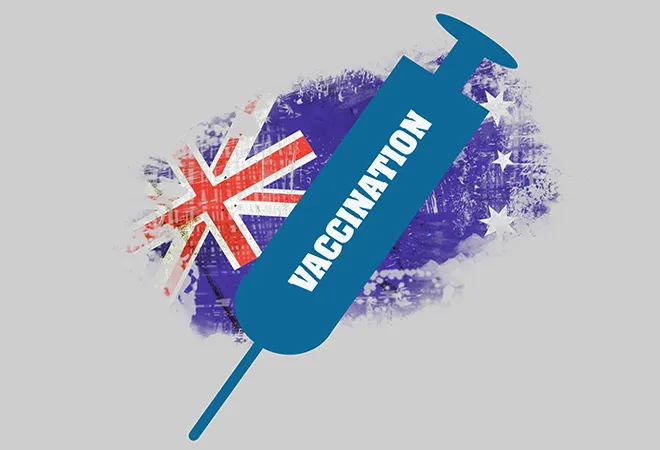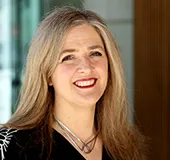 This article is part of the series — 2021: The Year of Vaccines.
This article is part of the series — 2021: The Year of Vaccines.
The year since the World Health Organisation declared COVID-19 a pandemic has divided the world as much as it has brought it together. Every region and every country has experienced this pandemic differently. Some countries have seen extraordinary death tolls, which will have intergenerational effects. Others have managed to contain the contagion, often at the cost of cutting themselves off from the world.
The arrival of effective vaccines — far, far earlier than could have been anticipated 12 months ago — has changed the landscape. For countries that were not able to contain COVID-19, it offers a potential silver bullet. But who is at the front of the queue?
The behaviour of the vaccine “haves” is going to make a big difference to vaccine “have nots.”
We know that access to vaccines is far from equitable, with more than half of vaccine orders slated for the 14 percent of the world’s population who live in high-income countries. In this environment, the behaviour of the vaccine “haves” is going to make a big difference to vaccine “have nots.”
The case of Australia and Pacific Island countries is instructive on what can be done — and what still needs to be done.
Pandemic in the Pacific
As the pandemic started, it was clear that the South Pacific would be one of the regions most vulnerable to the health and economic impact of COVID-19. Many have fragile health systems with limited access to quality services due to a lack of equipment, infrastructure and personnel, coupled with geographic isolation. At the same time, the region is heavily dependent on the outside world for aid, migration and tourism, meaning the economic cost of international travel restrictions would be great.
Many Pacific Island countries took steps like closing borders and imposing lockdowns and achieved enviable results in preventing infections. In the Pacific Community’s 22 island countries and territories, there have been only 300 pandemic deaths, mostly in French Polynesia and Guam. Eleven have not reported any cases at all.
The region is heavily dependent on the outside world for aid, migration and tourism, meaning the economic cost of international travel restrictions would be great.
However, the economic effects have been massive. For example, it is estimated that Vanuatu lost 70 percent of jobs in the tourism sector due to travel restrictions.
Australia’s support
Australia has a long-term national interest in its Pacific Island neighbourhood. One of Australia’s greatest strategic priorities from the colonial period until the mid-20th century was ensuring that nearby islands were not taken over by a potentially hostile power.
Australia remains the major aid donor in the South Pacific, even with increasing Chinese aid and investment. Australia announced a Pacific Step Up in 2018 including increased aid, establishment of an Office of the Pacific and a AU$ 2 billion infrastructure fund, suggesting that it seeks to maintain its status and influence in its immediate neighbourhood.
As the COVID-19 pandemic unfolded, Australia played a leadership role in the region. It offered quick financial support. It processed COVID-19 tests for the region. It provided protective equipment, medical supplies and specialist advisers. It also played an important role as a transit country and humanitarian corridor. Pacific workers in Australia under seasonal labour schemes were given visa extensions.
Australia remains the major aid donor in the South Pacific, even with increasing Chinese aid and investment.
One of Australia’s most important announcements was that, unlike the United States under the Trump Administration, it would support COVAX, a joint fund for equitable distribution of COVID-19 vaccines led by the Coalition for Epidemic Preparedness Innovations, Gavi and the World Health Organisation. It has pledged AU$ 80 million to COVAX for vaccine access in developing countries and has announced a further AU$ 523 million for vaccine access in the Indo-Pacific, of which AU$ 200 million will go to Pacific Island states.
COVAX with no vax
The problem is that COVAX has been unable to obtain the doses it needs in an environment of vaccine nationalism. According to WHO Director General, Dr Tedros Adhanom Ghebreyesus, “Even as they speak the language of equitable access, some countries and companies continue to prioritise bilateral deals, going around COVAX, driving up prices and attempting to jump to the front of the queue.” He views this as “a catastrophic moral failure — and the price of this failure will be paid with lives and livelihoods in the world’s poorest countries.”
The current situation is that COVAX is hoping to distribute 2 billion of its needed 6 billion doses in 2021, but this may be derailed if production delays for rich countries’ doses push COVAX further back in the queue. There is already evidence of this happening among rich countries, with Italy blocking a shipment to Australia. While some countries that have ordered more vaccines than they need, such as Canada and Norway, have said they will donate any surplus to COVAX, this will be some way down the track.
For the Pacific, the worst estimates are that the majority of the population would not be vaccinated until at least 2025.
Current estimates are that while high-income countries will achieve widespread vaccination coverage by the end of 2021, middle-income countries will not achieve this until mid- to late 2022 and the world’s poorest countries will have to wait until 2023. For the Pacific, the worst estimates are that the majority of the population would not be vaccinated until at least 2025.
The gravest concern for the Pacific is the economic effects: A delay in vaccine rollout will also likely delay the reopening of international borders, with serious consequences for tourism-dependent countries. Access to vaccines has become a crucial precondition of prosperity in a pandemic world.
Concerned about potential COVAX delays, some Pacific Island countries are reportedly in bilateral discussions, including with China. This may make it more difficult to create a coordinated regional response that deals with geographic and logistic barriers.
Options for further support
Australia — along with other states that care about the region — has other options to help support Pacific Island countries.
Rhetorically, Australia can stand up for vaccine equity as a moral issue and continue to advocate for the Pacific whenever it can, as it has with international financial institutions.
It can donate surplus vaccines, either to COVAX or directly to Pacific Islands. As a country that is manufacturing locally — with 50 million doses of the AstraZeneca vaccine to be produced in Melbourne — Australia can provide a portion of these doses to its close neighbours. It could also share its order of 51 million doses of the Novavax vaccine once it receives approval, either free or at discounted prices.
Australia can stand up for vaccine equity as a moral issue and continue to advocate for the Pacific whenever it can, as it has with international financial institutions.
Australia’s Minister for International Development and the Pacific, Zed Seselja, has flagged that Australia is looking at these options. It can learn from examples such as India’s plans to supply countries like the Maldives, the Seychelles and Mauritius as it develops its own vaccine diplomacy.
Finally, Australia can continue to support the region as a development partner, recognising that COVID-19 is not only a health issue. Australia announced a AU$ 300 million response package to help the Pacific and Timor-Leste address the economic and social costs of the pandemic. Such support will need to continue.
The Australian government recognises that ensuring that all people within the Pacific Island nations are able to be vaccinated is in Australia’s interests, both as a moral and economic case.
Rich countries need to step up to ensure that vaccine inequality does not become an impediment to the world’s health and economic recovery. In the words of COVAX, no one is safe unless everyone is safe.
The views expressed above belong to the author(s). ORF research and analyses now available on Telegram! Click here to access our curated content — blogs, longforms and interviews.



 This article is part of the series —
This article is part of the series —  PREV
PREV


